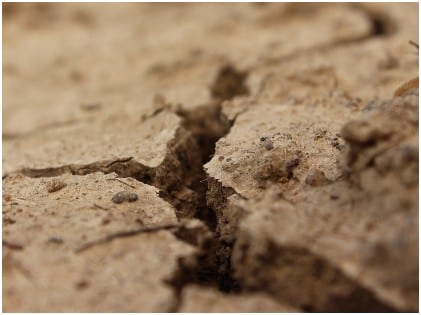People who are reliant on well water have no idea when a well would turn dry. As the water table level recedes, the pump will start sucking air, and as a result, the water won’t flow anymore. The decline in groundwater over the years has had its consequences putting people in dire straits. They either have to bear the drilling cost for another well or find another water source. And that might be difficult because the alternative water source could be far.
Recent research, from across the globe shows that people are facing a water crisis because of the wells running dry. Even a pretty moderate decline in the levels of groundwater can turn millions of wells dry. Experts believe that approximately one out of five wells are not deeper than the local groundwater level.
What Does the Research Reveal?

Based on the recent studies, experts have compiled and analyzed plenty of records regarding the location and depth of numerous wells across the planet and their dug dates. The research has been quite extensive, ranging from countries like Argentina to Thailand. The groundwater levels were compared to the depth of the wells by the researchers. Aside from that, satellites tracked the shifts in global water resources for data collection.
Their work also focused on the risks that existing wells face owing to a depletion in the groundwater levels. With a decline in the water levels in several areas, the newly drilled wells are deeper than the existing wells. However, surprisingly, the newly dug wells are not being drilled deeper than the older ones in areas where aquifers are falling. This implies that the new wells will run dry as the older wells if there is a continued decline in the groundwater levels.
Why are the Wells Drying Up?
 One of the major reasons why there has been a depletion in the groundwater levels in the western part of the United States is chronic overpumping. From the High Plains in Kansas to rural Arizona, this is the persisting issue.
One of the major reasons why there has been a depletion in the groundwater levels in the western part of the United States is chronic overpumping. From the High Plains in Kansas to rural Arizona, this is the persisting issue.
After the water has been pumped out from deep wells for large farms, the homeowners living in the vicinity have had to face dry wells. Therefore, they have to bear the cost of drilling a new well, which might also dry up in the coming times if overpumping is not under control.
Detrimental Effects of Unchecked Pumping
An Arizona Republic investigation conducted in the year 2019 revealed the drastic effects unchecked pumping has had on homeowners and rural towns. They have had to face the heat of mounting costs as wells turn dry. According to the analysis, corporate farms have been stretching their operations, and as a consequence. And that has increased the wells being drilled. Moreover, farming areas require more water.
So, automatically over-pumping is taking place. Owing to that, as discussed above, there has been a steep decline in groundwater levels. The massive use of groundwater has also led to the drying up of desert streams and cut down several other rivers’ flow. There are places where collapsing aquifers have resulted in fissures on the land and cracks on the canals and roads.
With regards to California, the reports of water supply shortages in households have gone up to 2800. They are preparing reports since the year 2013. Several wells in this area have dried up due to California’s drought between 2012 and 2016. A majority of these wells were in the Central Valley. The main reason behind such a massive water shortage is unchecked water pumping for agricultural needs over the past decades.
A Global Crisis

Groundwater is like life to billions of people across the globe. They pump groundwater from wells for drinking. The lion’s share of the irrigated agriculture in the world is heavily dependent on groundwater.
The data gathered from Spain, Portugal, Brazil, South Africa, Chile, and Namibia were useful to compile and analyze the records of good completion. The crisis of depleted groundwater level is almost everywhere. Therefore, recent proposals are trying to establish some rules and regulations in the areas affected by unregulated water pumping.
The potential solution to this crisis is that countries should monitor the groundwater levels and inform everyone about whatever data is collected. It is also possible to implement water-saving technologies.




